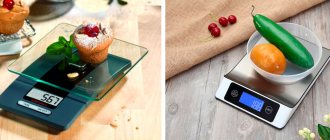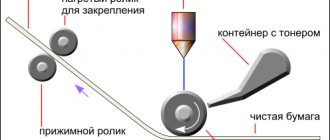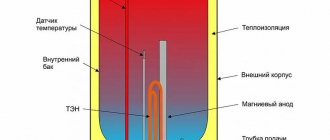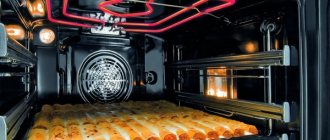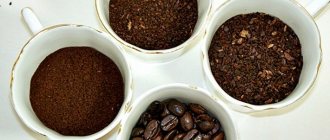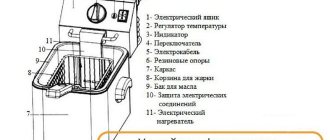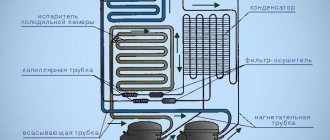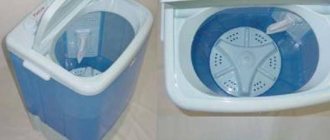What is a plotter and what is it used for?
Before you begin to review the equipment, you need to understand its purpose. Basically, a plotter refers to a printing device. Essentially, it is an analogue of a printer, but more advanced. The plotter device allows you to perform large-format printing, create drawings, 3D postcards, advertising signs and other products. If the printer prints only on paper, then the media can be cardboard, fabric, film and other synthetic materials. There are special models, the device of which allows you to apply an image to T-shirts, other light clothing and even round objects, such as cups.
A plotter is similar to a printer, but has advanced functions.
Initially, the equipment was intended only for printing. Over time, his device was improved. Now this concept refers to machines that can not only print, but also cut out shapes from the media.
History of the creation of the plotter
In various sources there is equipment called a plotter. These are the plotters that were originally named that way. The machines were intended for drawing diagrams, tables, maps and other graphic images on large format media.
Initially, plotters were designed for printing graphic images on large media formats
Plotters appeared with the beginning of the development of computerization. In 1959, the first Calcomp 565 model went on sale. The device moved paper along its axis with wheels. Drawing was carried out with a writing pen.
Calcomp 565 was replaced by an improved Computervision's Interact I plotter. The equipment was equipped with an auto-design system. The drawing element was replaced with a ballpoint pen. The advantage of the equipment was high image accuracy. Over time, the manufacturer modernized it. It became possible to apply colored designs using multi-colored feathers.
High-resolution tablet models appeared in 1970. The equipment was produced by manufacturers HP and Tektronix. The electronic devices were the size of a table.
A modern plotter is a multifunctional device
A modern plotter is a device used for bright, colorful, high-resolution printing. Many models have large RAM and hard drive. An additional cutting function has appeared. Drawing blocks have been improved, allowing the medium to use not only paper, but also other materials.
History of the plotter
The first plotter to appear was the Calcomp 565. It went on sale in 1959, during an era of rapid technological development. During this period, computers, or electronic computers (computers), were incredibly gigantic compared to modern laptops and personal computers, to which we have already become accustomed.
Calcomp 565 reproduced graphic information by moving the paper with special wheels, playing the role of the X axis, and moving the pen provided drawing along the Y axis.
As an alternative to Calcomp 565, they invented Computervision's Interact I, which became the first computer-aided design (CAD) system. It was an improved device for drawing graphics on a different scale, which was controlled by a computer. The drawing element was a ballpoint pen. The advantage of this device was the high accuracy of the design applied to paper due to the high-precision movement of the pen within the writing area, and in subsequent modernization the ability to use multi-colored pens of different thicknesses was introduced. But there was also a drawback - for proper work, a space was required that corresponded to the area of the outline.
In the seventies of the last century, HP and Tektronix, well-known digital technology corporations, showed the world standard resolution plotters the size of a desktop, called “tablet plotters,” and in the eighties the smaller and lighter HP 7470 came out. It was an indispensable means of replication in business, but due to their slow printing speed they were of little use for printing general-purpose designs. At a time when inkjet and laser printers began to gain popularity due to their high printing speeds, plotters gradually ceased to be used.
What is the working principle of a plotter
The work of the first plotters was to move the paper medium along the X coordinate. The movement of the drawing pen occurred along the Y coordinate. Equipment with a ballpoint pen was controlled by a computer. Modern plotters operate via a connection to a computer port, SCSI interface and Ethernet. Advanced devices have their own built-in buffer and control display. For control, there are special programs where the operator develops an image and sets parameters. When the project is ready, it is sent for printing. The device receives the signal and begins to perform the task exactly according to the program.
Main types of plotters and their characteristics
There are three types of equipment that differ in functionality: cutting, printing and combined plotters. The third option is of great interest. Such devices are often called hybrids. You may come across the name plotter-cutter. The advantage is that you can cut and print images on a plotter. There is no need to purchase two expensive devices.
Important! A hybrid plotter is indispensable in the production of stickers and other similar products where it is necessary to apply an image and cut it along a certain contour.
If we talk about the main varieties, then there are two groups of plotters: cutting and printing. Each device performs only one specific function.
Cutting plotters
From the name of the device one can already judge that it is intended only for cutting media. The plotter is equipped with a knife that, according to a trajectory specified by the program, cuts out a fragment, a complex pattern, and even text.
The cutting apparatus is equipped with a knife instead of a printing unit
Essentially, a cutting plotter is a cutting machine. Select a device according to its characteristics. First of all, the format is taken into account, which determines what size media can be used. Cutting speed affects productivity. The pressure of the knife and the type of cutter determines what material the carrier can be used from, for example, film, cardboard.
Attention! An important feature for a cutting plotter is the presence of an optical sensor. The positioning device ensures cutting accuracy. The knife does not extend beyond the marked boundaries of the cutting lines.
Printing plotters
Printing equipment can only apply an image to a medium. The design of the devices is different. Instead of a knife, the working unit is a drawing block. The method of applying the image depends on the printing technology.
Printing devices are only capable of printing an image onto a medium
To use the plotter for its intended purpose, you need to choose the right device taking into account its characteristics. Printing speed, as in the previous device, affects performance. Resolution is responsible for the clarity of the image at certain sizes. The format determines what size media can be used and what size the image will be. The color rendering parameter affects the brightness and saturation of the picture. Such plotters are needed in the production of advertising products. For drawing graphic images, color rendering quality is not particularly important.
Advice! A high-speed printing machine is needed to produce large quantities of products.
Types of plotters according to the method of sheet placement
The carrier for the equipment is paper, cardboard, film, synthetic fabric and other materials. They come in the form of sheets or rolls. Each type of plotter is designed to feed a specific media, which determines its design.
Flatbed plotters
The design of tablet-type equipment is similar in functionality to a printer. The technique only works with sheet media. It is fixedly fixed on the table using magnetic, electrical or mechanical fixation.
The design of flatbed models includes a large table for sheets of media
Tablet devices are usually used to print images in A2 and A3 formats. The disadvantage is the large size due to the presence of the table. Because of this, tablet-type devices are not very popular. This technique is in demand when printing advertising signs of huge sizes.
Roll plotter
A special feature of roll equipment is its compactness. The media is wound into a roll of a certain thickness. The feed occurs along the drum, where, during the movement, the drawing block applies the image.
The design of roll models allows the use of long media wound on a roll with compact equipment sizes
The device requires little space. Roll models save consumables and have better print quality. The devices also win in terms of functionality. Their device allows you to perform a greater number of tasks.
Types of plotters
This technique is classified by design:
- Tablet – printed on sheets of a certain format and allow you to achieve high image accuracy. They look like a flat table and are often used on a large scale in production.
- Rolled – more compact and, accordingly, not so expensive. Unlike a tablet, here a sheet of paper is not placed on the entire surface, but hangs freely. Suitable for small printing businesses.
According to the method of drawing images, plotters are divided into:
- Laser - toner is used as a dye. Such a device is useful in cases where the accuracy of a drawing, diagram or any other graphic information is important. Cutting devices use a high-precision laser instead of a knife.
- Inkjet - uses ink. Used for photo printing and outdoor advertising production. In size they can reach several meters in length. Such plotters print not only on paper, but also on banner fabric, canvas, and self-adhesive film.
Environmental problems have led many manufacturing companies to begin producing plotter models using eco-solvent inks. They are practically odorless and less harmful to the environment. Another advantage is the small particles of pigment, which provide good quality printing - 1440 dpi (the number of dots per 1 inch).
Eco-solvent inks are considered environmentally friendly because they contain very few volatile organic compounds. In addition to safety, such ink extends the life of the print head.
What types of plotters are there by type of drawing block?
A special feature of printing machines is the presence of a drawing block. The printing technology depends on its device. Each drawing block is capable of working with a specific type of media.
Pen plotters
The writing head of the equipment has a device in the form of pens. This is where the name came from. During operation, the pen moves in two directions. The devices are considered to be of the vector type and come in two types: some draw with liquid paints, others apply the image with slate pens.
Pen models are vector-type devices
The head is driven by a motor, which creates a certain level of noise. The advantage of a pen device is high print quality, contrast and good color rendering. Disadvantage: low printing speed.
Inkjet plotters
In terms of printing technology, the devices resemble ordinary household inkjet printers. The picture is applied with liquid paints sprayed from the nozzle of the writing head. Most models work with 4 base colors. Other shades are obtained by mixing paints.
Most inkjet plotters work with 4 basic ink colors
The jet head is equipped with a large number of nozzles. During printing, they heat up, due to which an air-filled bubble is formed, which, under pressure, squeezes the ink onto the media. The advantage is simple operation of the plotter, high productivity, clear pictures, and affordable prices for consumables.
Electrostatic plotters
This category includes devices that apply an invisible image with charged particles onto a special medium. Liquid ink sticks to them and is finally fixed by drying.
Equipment with electrostatic printing technology is sensitive to room temperature and humidity
The advantage of plotters is the high speed of drawing. However, electrostatic devices can operate properly if the room is maintained at the manufacturer's recommended humidity level and air temperature.
Important! Electrostatic models are expensive and difficult to maintain.
Laser and LED plotters
The design of equipment in this category resembles laser printers. First, the head applies an invisible image to the media using a beam. Dry powdered paint - toner - sticks to the charged particles. Once heated and passed through the media drum, the ink is baked into a permanent image.
The writing head of the laser device has a long service life, since the possibility of paint drying on it is eliminated
The advantage of laser and LED devices is high performance. Due to the high resolution, clear images are obtained. The downside is the high cost of the equipment.
Direct image plotters
Printing technology is based on the use of thermal paper. The media passes through a special head - a comb. It is equipped with many heaters. Depending on the heating temperature, a certain color of each point of the pattern appears on the media.
Models with direct image output technology print on thermal paper
The peculiarity is that the mechanism of operation of plotters for direct image output during monochrome printing allows you to obtain a high-quality image with good clarity. The equipment is more in demand by engineering organizations for drawing up projects.
Thermal feed plotters
The printing technology and writing head design are similar to those of models with direct image output. The carrier is thermal paper, but between it and the comb there is a special film called a color donor.
Thermal feed machines print beautiful color images
During printing, the head passes over the media the required number of times. Warming up at a certain temperature, the donor leaves the desired color on thermal paper. Printed products do not fade from UV rays and are resistant to moisture.
Checklist for those who choose a plotter
A plotter is similar to a printer, but is designed to work with materials in large formats - from A2 and larger. It is often called a plotter. Prints on different materials: paper, synthetic fabrics, canvas, film. It all depends on the type and functionality of the equipment. There are models that can not only print, but also cut material into stickers, labels, and logos.
Drum
The principle is simple: the paper is inserted into the drum and moves with it, and the print head applies the image.
The most popular model because it has a number of advantages:
- high image quality;
- multifunctionality and versatility;
- economical consumption of materials;
- compact sizes.
However, to work with the model, you need to maintain optimal temperature and humidity in the room.
Feather
The main feature is that the picture is drawn using a “pen” that moves only in two directions. Now there are two types of equipment in the assortment: one uses liquid ink, the second uses special pencils. However, this technique has a low image printing speed and is quite noisy.
Among the advantages:
- excellent quality;
- high color rendering and contrast.
It should be borne in mind that to obtain such a result, you will have to select consumables in the “above average” price category.
Jet
Don't know which plotter to buy if your budget is limited? Take an inkjet one: it is inexpensive, and the materials for it are also sold at an affordable price.
The technology is reminiscent of standard printers: the technique applies many dots of ink in four basic colors. If a different shade is needed, the base colors are mixed. In this case, the ink is squeezed out through nozzles with thermal heaters.
It has become widespread due to a number of factors:
- adequate prices;
- availability of consumables;
- simple maintenance;
- a high resolution;
- good speed and high performance.
To get especially bright and contrasting pictures, you can adjust the ink supply mechanism. But you will have to do this manually.
Electrostatic
The contours of the future image are applied to the film, which are then filled with liquid ink. Printing is only possible using certain paper, and after applying the image, the material must be thoroughly dried.
Direct plotter
Works with thermal paper impregnated with a special chemical composition. The device acts on the surface with a special comb, due to which the paper darkens at the points of contact. This is reminiscent of the technology for printing receipts in a store. You can only obtain a black and white image, so this technique is suitable for engineering enterprises and design bureaus where drawing templates and patterns are needed. The equipment is undemanding in maintenance.
Thermoplotter
The operating principle is similar to the previous plotter. First, the device heats the material, then gives it the required color using a color “donor”. The peculiarity is that first one color is printed, then the second and third. This means that the material is passed through the plotter a large number of times. But the picture turns out to be immune to the effects of water and ultraviolet radiation.
Laser and LED
Functions like a laser printer. Using a laser beam, an invisible image is applied to the material, after which toner is glued onto it and exposed to high temperature. As a result, it melts, spreads and sticks securely, and the picture cannot be washed off with water.
Such plotters print very quickly and achieve high quality and resolution. But they are expensive. At the same time, laser beams from some devices are capable of burning through materials.
Cutting
A type of modernized pen plotter that has a knife holder instead of a pen. The head with the blade moves along a special carriage only to the right and left. In this case, the rollers can move the paper both forward and backward, which allows cutting in any direction.
Helps apply images to vinyl, thermal film, cardboard, photo paper and even fabric. The cutting functions are performed by a special knife according to a predetermined program. Advertising signs and car stickers made from vinyl film are the results of the cutter’s labors.
There are separate plotters that can print on media with increased thickness - up to 240–250 g/m2. For comparison, conventional models work with 80–90 g/m2 paper. Typically, pigment inks are used to transfer images, since they best withstand the interaction of moisture and ultraviolet rays. However, if we are talking about a banner that only needs to last a few months, you can use water-soluble ink.
Additional selection factors
What should you consider when deciding which plotter to choose? To understand which plotters are best for you, check with the seller:
- type of printing: color or monochrome;
- equipment class;
- print speed and quality;
- formats that the selected device works with;
- paper feeding method;
- availability of consumables;
- availability of options;
- guarantee;
- connection methods and drivers
How to use a plotter
To work, you will need special software. It comes with the device. If the basic program is not satisfactory, you can use third-party software. To print on a plotter, you need to do the following:
- create a pre-prepared file in the program or find it on the computer;
- click the “Print” command in the menu;
- in the equipment line, find the plotter connected to the computer, click the “Properties” command;
- set the parameters in the menu that appears, click the “Ok” command;
- First, a preview of the picture will appear, and if everything is satisfactory, give the “Print” command.
The nuances of operation may vary depending on the installed operating system and the programs used.
You can use a plotter for cutting in a similar way, but there are a lot of nuances. First, the device is tested on unnecessary media, so as not to spoil the material, for example, with color pictures for cutting.
The cutting device must be tested before use.
After submitting the “Properties” command, in the settings you set the pressure on the knife and the length of its extension, which depends on the media used. Next comes the image preview and the “Print” command.
All cutting type plotters cannot automatically adjust to the media type. The operator must do everything himself. It is important to check the sharpness of the knife, the accuracy of the constructed image, and place a substrate with good adhesive properties under the media so that the material does not move during cutting.
The video contains interesting information about the plotter:
Software for work
The plotter operates according to a predetermined algorithm. To get started, you need to connect to a personal computer. The image to be printed is sent to the device, after which the cutting process occurs. The speed of operation greatly depends on the technology that a particular model uses. Subsequently, the resulting material is applied to a metal or textile surface, depending on the need.
The plotter contains software that carries out the process. Of course, the appropriate program must also be installed on the personal computer, without which it is impossible to send the drawing for cutting. The easiest way to do this is from Corel - CorelDraw, software for plotter printing.
If contour cutting is carried out incorrectly, or the cut has shifted along the printed one, you need to adjust the software.
In addition to CorelDraw, you can use the PlotCalc program. It has a fairly simple interface, it’s easy to work with, and it doesn’t take much time to learn. Another well-known program for working with plotters is SignCut. The full version is paid, but you can download a trial test version from the official website, which has some limitations. In general, the program menu turned out to be somewhat overloaded, but the functionality is impressive. Using this utility, you can control the cutting depth of the knife, provided that this option is supported by the model itself.
The eCut program is a little less known. The main advantage of this software is that it allows you to cut files directly from CorelDraw. Files are written directly to the plotter port, bypassing the involvement of drivers, therefore, errors and incompatibilities are minimized.
The following software for outputting information to a plotter is called OMEGA CUT. Omega is used mainly for working with project documentation and is popular among those who work with plotters in this field. The functionality is limited in scope; perhaps the programs can be described as average.
The operating principle of a plotter, in addition to printing, also involves cutting. Of course, not all software is written with this function in mind. To put it simply, not all plotter programs are suitable for a plotter-cutter and vice versa. For devices operating on the 2-in-1 principle, “native” software is most often supplied, developed and implemented by the equipment manufacturer itself. However, there is always the option of using third-party software if the capabilities of the pre-installed one no longer meet the requirements.
If you just need to cut out pictures, then there is no need to purchase a program, the license for which costs hundreds of thousands of rubles. It will suffice to limit ourselves to more affordable analogues. Also, if the work only involves printing, then you can limit yourself to the capabilities of the built-in software without investing a penny in purchasing software. Of course, if in the process of work you have to resort to the services of a vector graphics editor, as well as print complex patterns, then you should think about expanding the functionality of the plotter software.
Setting up and installing the plotter
Before you start, you need to configure the plotter, and if it is being used for the first time, installation is required. The manufacturer supplies its device with an installation disk. It usually contains instructions, drivers, and software. To install, you need to load the disc into the drive and follow the pop-up prompts. If for some reason the disk is not available, everything can be downloaded online from the manufacturer’s website. After installing the software, click the “Devices” button in the Start menu. The operating system must detect the device. In the “Printers and Faxes” line, double-click with the left button of the computer mouse. In the window that appears, set the required settings.
One of the popular programs for work is Corel Draw.
The settings you have made can be saved and used in the future. They are changed if necessary. After settings, the equipment is put into operation provided there is a ready file for printing or cutting. If it doesn’t exist, create it in Corel Draw, Plot Calc, Sign Cut or another similar program.
Types of plotters
There are several classifications of plotters, according to one of which they are divided into:
- pen, inkjet and electrostatic;
- roll and flatbed;
- vector and raster.
Plotters can be classified according to the following parameters:
- according to the method of generating a drawing, they are divided into plotters with random scanning and raster;
- according to the method of moving the media - flatbed, drum and mixed (friction, with an abrasive head);
- according to the tool used (type of drawing head) - pen, photo plotters, with a scribing head, with a milling head.
Finished works on a similar topic
Coursework Plotter 480 ₽ Abstract Plotter 270 ₽ Test paper Plotter 190 ₽
Receive completed work or specialist advice on your educational project Find out the cost
